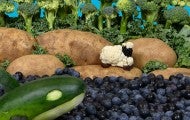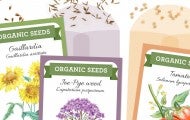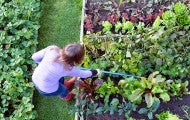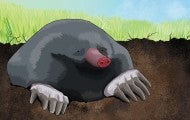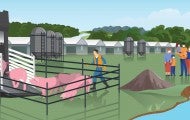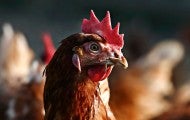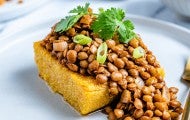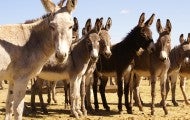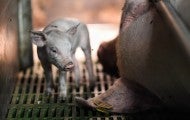There’s a surprisingly simple way to make a big difference in the lives of animals: incorporating more plant-based foods. The more plants you eat, the more animals you’ll spare from lives of suffering. Fewer mother pigs will be kept in crates so small they can barely move. Fewer egg-laying hens will...
They were like moths to a flame or, more accurately, butterflies to a native plant. No sooner had I unloaded two joe-pye weed perennials from my car last August than three tiger swallowtails dive-bombed the pots, as if to validate my purchase. If only my fellow shoppers knew what they were missing...
Much of what we do in the name of aesthetics comes at a cost to our overall well-being. From fad diets to chemical peels to cosmetic surgeries, beauty routines attempt to squash what’s natural in favor of an unattainable and short-lived “otherness.” The mindset isn’t limited to the treatment of our...
Rochester Institute of Technology has committed to having 50% plant-based offerings on menus by 2025, in collaboration with the Humane Society of the United States. As part of this effort, HSUS chefs provided an in-person plant-based culinary training to the university culinary staff. These events...
It starts out mildly enough: Heading to work on the subway, you realize you forgot your wallet. No big deal, you think. I’ll borrow money to get home. Soon the lights go out and the train hurtles toward the sky, speeding through the atmosphere. Time passes—it’s hard to tell how long. The subway is...
Pop quiz: What’s the best way to help butterflies in your backyard? If you answered “Plant butterfly bush,” you’re in good company. A recent survey of my gardening friends elicited the same response from more than a few. It’s easy to understand why: Aside from its self-reinforcing moniker, the plant...
Imagine a chicken. Picture her downy white feathers and small, intense eyes. Maybe she’s sitting on a nest, softly clucking. Perhaps she’s scratching in the dirt, a quaint red barn in silhouette behind her. Cows graze contentedly nearby; a pig snuffles in the mud. It’s an idyllic vision, familiar...
The Humane Society of the United States has released its annual Protein Sustainability Scorecard, which assesses the efforts of top U.S. food service companies to reduce their impact on the environment and animals through purchasing and menuing practices. The companies included in this report are...
Many Marches ago, as I mindlessly contorted myself to pull a deep-rooted weed from the garden patch, my thoughts turned longingly to the smell of fresh basil that would eventually grace what I saw as a still-barren vegetable graveyard. This spot was not so lifeless as it appeared, I would soon learn...
Fertility control: Essential to American wild burros and mustangs While wild burros are legally viewed in the same light as the American mustang, protected as a living symbol of the American West, the wild horses often seem to receive most of the public's attention. But burros have played a critical...
Around the world, animals used for meat, eggs and dairy often suffer on factory farms where they are treated as units of production rather than living, feeling creatures. The Humane Society of the United States and Humane Society International present comprehensive reports on animal agribusiness and...
